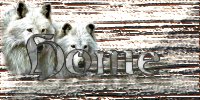Red Wolves
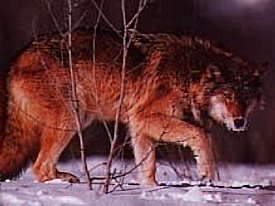
A fact about red wolves: Red Wolves tend to form pair-bonds for life. Red wolves are scientifically called Canis rufus.
The Status of red wolves is Endangered.
Here is information about the population of red wolves: Red wolves were once hunted almost to extinction, in 1980 less then twenty wolves were rounded up by the U.S. Fish and Wildlife Service to be bred in captivity. The red wolves were officially declared extinct in the wild. By 1987, enough animals had been bred to begin a reintroduction program. Thanks to these programs, there are currently 50 to 80 red wolves in the wild.
The Threats that red wolves face: Threats to the red wolf include habitat loss because of human development and illegal hunting.
Red Wolf survival: It has been estimated that red wolves live for four years in the wild and up to 14 years in captivity.
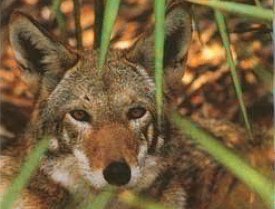
Historically, red wolves ranged throughout the southeastern United States from Pennsylvania to Florida and as far west as Texas. Today, only a few wolves roam free in the Alligator River National Wildlife Refuge and nearby Pocosin Laked National Wildlife Refuge in North Carolina.
It has been suggested that the red wolves come from a cross between gray wolves and coyotes, the red wolf may have existed in North America before both the gray wolf and the coyote. Fossils have been found that are up to 750,00 years old, these indicate that the red wolf may be a close relative to a primitive ancestor of the North American canids.
The red wolf is similar to, but smaller than a gray wolf. And the red wolf has characteristics of a gray wolf and a coyote. The red wolf often interbreeds with the coyote, and because of this it is believed that the red wolf may eventually become exstinct by hybridization, rather than by man. The Destruction of forests and coastal marsh's will also destroy the red wolves.
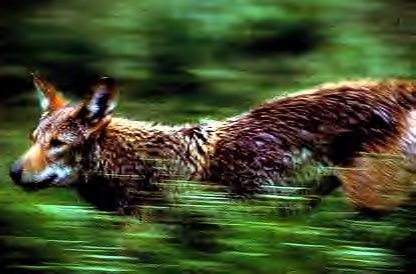
Kingdom- Animals
Class- Mammals
Order- Carnivores
Famliy- Canidae
Species- Rufus (red wolf)
Common names- Red wolf, swamp wolf
Fur color- cinnamon red, black, brown, gray, yellow..
Eye color- golden yellow, brown, or sometimes green
Height- 1 1/2 feet at shoulders
Length- 4 to 5 1/2 feet long, tip of nose to tip of tail
Weight- 40 to 70 pounds
Paw- 2 1/2 x 3 1/2 inches.
Long Legs- Wolves have very long legs and very large heads. Their necks are quite small for as big as they are.
Diet- The red wolf's diet consists of: Deer, rabbit, rat, raccoon, insects, crustaceans, mollushs, and fruit.
Range- The traditional range covered much of the southeast from Texas to Florida and up to North Carolina.
Description of the red wolf- The red wolf is smaller than the gray wolf, but larger than the eastern coyote.
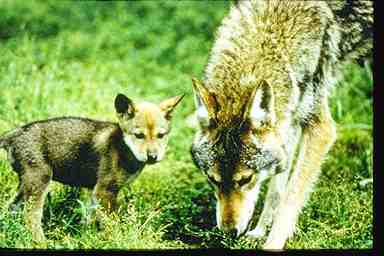
No one really knows the evolution of the red wolf. It has been noted that red wolves at the northern boundary of their range they tend to look like gray wolves and at the southern boundary of their range they tend to look like coyotes. Red wolves prefer to live in forests, swamps and coastel prairies. Dens are often located in hollow trees, stream banks and sand knolls. A known fact about red wolves is that they are most nocturnal, active at night. Another fact is that red wolves prefer a warm, moist habitat, with much vegetation. But sometimes they live in areas with pine forests, and hardwood forests, coastal prairies, and marshes. Red wolves normally breed between March and May. In the wild, red wolves normally establish life long mates, and their packs usually consist of an adult pair and the young. In 1980, red wolves were declared biologically extinct in the wild.
|




